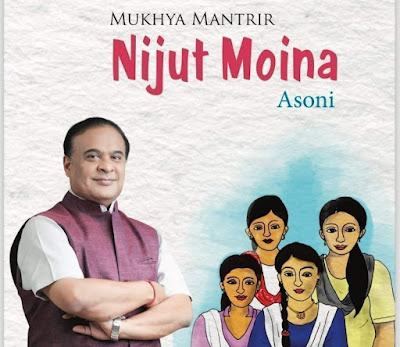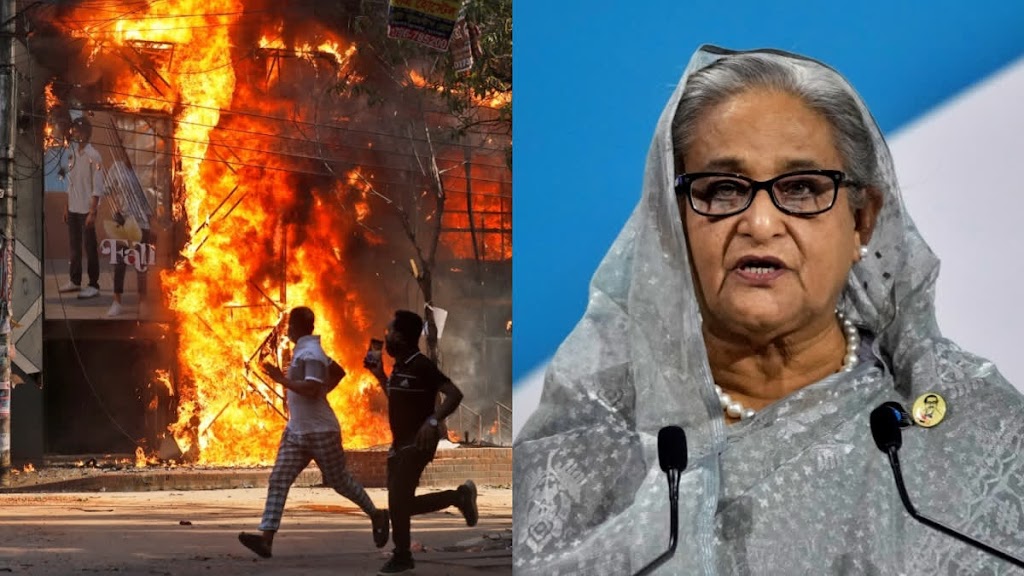Let’s take a look at 6 such significant movements that made India independent in 1947:
The Indian independence movement was a movement which started from 1857 to 15th August 1947, when India got its independence from the British Raj. Mahatma Gandhi ‘Father of the Nation’ played an important role in India’s freedom struggle. It was Mahatma Gandhi who took the responsibility to make India free from British and his major movements that helped in Indian freedom struggle and achieving freedom from British. Here we are discussing all the major events that led to Indian Independence.
 |
| Image source: StudiousGuy |
The 6 major events that led to Indian Independence are broadly discussed below —
The 6 major key turning points in India’s struggle for independence against the British.
1. 1857 – Sepoy Mutiny – the First War of India’s Independence
The revolt of 1857 is also known as the Sepoy Mutiny and the first war of independence. It was called as the first war of independence because for the first time the people of India, specially the entire nation irrespective of their caste, creed, religion, color had came together and staged an armed protest against the Britishers for independence from their colonial rule.
The major causes behind the Sepoy Mutiny or the first war of independence were discussed below:
i) The fear of the rulers of princely states of India that their states would be taken over by the british. The resentment of the people of the annexed states and the disrespect shown to the Mughal emperor Bahadur Shah, by the British which finally resulted political causes.
ii) The inefficient nature of the British administration towards the people of India as well as the ineffectiveness of the police-system. Infact the huge difference between the revenue-system and keeping away the Indians from their services had created a sense of general discontent among the people of India.
iii) The worst effect of the British rule on India was the impoverishment of the Indian people because Indian handicrafts were destroyed and the foreign trade was monoplised by the English. In the meantime because of the high demand of the revenue the Indian peasants are not able to do anything and therefore they suffered very much.
iv) It was the time when the racial arrogance of the Britishers was in peak and that is why the activities of the missionaries created a huge difference between the people of India and later indian people feared that the English were best upon polluting their religion and society.
v) The main reason behind the Sepoy Mutiny was the introduction of Enfield rifle, where the use of the fat of pig and cow in greasing its cartridges and the insistence of the English led to the root outbreak of the revolt in May 1857.
2. 1919 – Jallianwala Bagh Massacre
 |
| Image source: Vajiram IAS |
In the history of India the Jallianwala Bagh massacre is also known as the Amritsar massacre. It took place on 13 April, 1919, when an Acting Brigadier-General Reginald Dyer without any major cause ordered the troops of the British Indian Army to fire their rifles into a crowd of unarmed Indian civilians in Jallianwala Bagh, Amritsar, Punjab. This firing killed 379 innocent people and more then over 1,200 people got injured. Now still on the walls of the Jallianwala Bagh those bullet marks can be seen which is now become a national memorial.
The Jallianwala Bagh massacre was a full proof plan by the British because after the massacre the British military officer, General Dyer announced that he had done this because of to introduce moral effect among the people that is why he was decided that he is going to shoot down all the men who had gone to the meeting.
The most interesting fact was that later the Britishers of England gave him an honour for killing the innocent Indian people. Later a daily news paper of England called this brutality as one of the most bloody massacre of modern history .
3. 1920 – Non Co-operation Movement
 |
Powerful Citizen Led Movements In India That Changed The Nation Forever During British Rule |
Mahatma Gandhi launched the “Non-Cooperation Movement” on 1st August 1920 at Nagpur session of Congree. It was the first mass movement in India which was organized nationwide during India’s struggle for freedom. During the time all the people were asked to blacklist all the “foreign goods” and use only “Indian-made goods”.
The major aim of Non-Cooperation Movement was to achieve Purn Swaraj but the movement was totally failed. After two years due to the occurrence of the “Chauri Chaura” incident, Gandhi cancelled the movement in February, 1922.
The Causes of Non-Cooperation Movement —
The Non – Cooperation Movement has four main reason :
i) Jallianwala Bagh Massacre and Resultant Punjab Disturbances
ii) Dissatisfaction with Montagu-Chelmsford Reforms
iii) Rowlatt Act
iv) Khilafat Agitation
4. 1930 – Dandi March
 |
| Image source: weebly.com |
The Dandi March, was also known as Salt March or Salt Satyagraha, a 24-day non-violent civil disobedience protest in India led by Mahatma Gandhi. On March 12, 1930, in Delhi, Mahatma Gandhi embarked a historic Salt March from Sabarmati Ashram in Gujarat’s Ahmedabad to the village of Dandi.
The Salt Satyagraha was initiated against the salt tax that was imposed by the British Government to the people of India.
The main effects of Salt March or Salt Satyagraha were mentioned below :
• In western India the Indian freedom struggle came into limelight for the satyagraha.
• A huge number of people came together and protest for the same cause including women, depressed class.
• The movement showed the power of non-violence in fighting against colonialism for the freedom struggle.
5. 1942 – Quit India Movement
 |
| Image source: Free Press Journal |
On August 8, 1942 the Quit India Movement was launched at the Bombay session of the All India Congress Committee (AICC) by Mahatma Gandhi. The Quit India Movement also known as India August Movement or Bharat Chodo Andolan as well.
The protest was quickly initiated to demand an end to the British Raj in India. The ‘Quit India’ movement united the people of India against British rule. The movement was started just because of the failure of Cripps Mission to guarantee any kind of a constitutional remedy to India’s problems which led to the INC calling for a mass civil disobedience movement.
Key facts of Quit India Movement :
i) On August 8 and 9, 1942, Gandhi with other leaders gathered in Mumbai’s Gowalia Tank Maidan where Gandhi delivered a speech marking the beginning of the Quit India Movement.
ii) In his speech Gandhiji called the nation to ‘Do or Die’.
iii) During the time, Congress was declared an unlawful association, leaders were arrested. Because of that the second half of the movement was become so violent that people set fire at post offices, government buildings and in railway stations.
iv) As a result British refused to grant independence of India and stated that it could only be possible after the 2nd world war ended.
v) The Indian bureaucracy did not support the Quit India Movement.
But the movement made Britishers to realize that India could not be governed now without the supp ort of Indians.
6. 1947 – India Got Independence
 |
| Image Source: DailyVedas |
On June 15, 1947, the British House of Commons passed the Indian Independence Act, or Mountbatten Plan, which divided India into two dominions i.e. is India and Pakistan. It called for each dominion to be granted its independence by August 15 of that year (1947). Therefore at midnight, on 15 August 1947, India became an independent nation.
On August 15, 1947, Jawaharlal Nehru addressed the nation with a new Declaration of Independence and became the first prime minister of India. India welcomed its new dawn with Pandit Jawaharlal Nehru’s famous words – “At the stroke of the midnight hour, when the world sleeps, India will awake to life and freedom…”. Prime Minister Nehru and Deputy Prime Minister Sardar Vallabhbhai Patel invited Lord Mountbatten to continue as the Governor General of independent India. Mountbatten was replaced in June 1948 by Chakravarti Rajagopalachari.
With this India’s 200 long years of slavery, oppression, and colonization under the British rule came to an end. India’s freedom struggle has inspired the world because it was the most Non-Violent campaigns in the world.
Related relevant queries —
* History of the Indian Freedom Movement
* Road to India’s Independence Movement
_Thank You_



